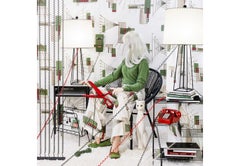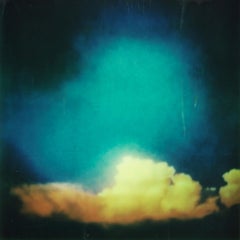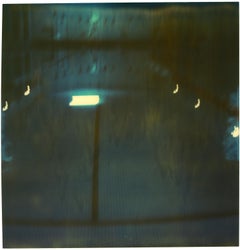Light Art
21st Century and Contemporary Contemporary Color Photography
Archival Pigment
1980s Modern Portrait Photography
Black and White, Archival Pigment
2010s Contemporary Landscape Photography
Archival Paper, Photographic Paper, C Print, Color, Polaroid
Early 2000s Contemporary Figurative Photography
Archival Paper, Photographic Paper, C Print, Color, Polaroid
2010s Contemporary Figurative Sculptures
Glass
Early 2000s Contemporary Color Photography
Archival Ink, Archival Paper, Color, Archival Pigment, Polaroid
1950s Modern Color Photography
Archival Pigment
1950s Modern Color Photography
Archival Pigment
2010s Contemporary Color Photography
Archival Pigment
2010s Contemporary Color Photography
Archival Ink, Archival Paper, Color, Archival Pigment, Polaroid
2010s Contemporary Color Photography
Archival Paper, Photographic Paper, C Print, Color
21st Century and Contemporary Realist Figurative Paintings
Wood, Oil
2010s Contemporary Color Photography
Archival Ink, Archival Paper, Color, Archival Pigment, Polaroid
2010s Contemporary Nude Photography
Photographic Film, Photographic Paper, C Print, Color, Polaroid
2010s Contemporary Color Photography
Archival Pigment
2010s Pop Art Black and White Photography
Color, Archival Pigment
2010s Contemporary Color Photography
Archival Pigment, Encaustic, Wood Panel
1950s Modern Black and White Photography
Silver Gelatin, Black and White
2010s Contemporary Color Photography
Color, Archival Pigment
21st Century and Contemporary Contemporary Color Photography
Photographic Paper, Archival Pigment
2010s Contemporary Color Photography
Archival Ink, Archival Paper, Color, Archival Pigment, Polaroid
2010s Contemporary Color Photography
Archival Ink, Archival Paper, Archival Pigment
2010s Contemporary Color Photography
Archival Pigment
21st Century and Contemporary Abstract Color Photography
Archival Pigment
1950s Interior Paintings
Gouache, Paper
2010s Contemporary Color Photography
Archival Pigment
2010s Modern Portrait Photography
Black and White, Archival Pigment
1970s Modern Portrait Photography
Archival Pigment
1950s Modern Color Photography
Archival Pigment
1960s Modern Black and White Photography
Black and White, Silver Gelatin
1980s Contemporary Color Photography
Photographic Paper, C Print, Color, Silver Gelatin
21st Century and Contemporary American Realist Figurative Paintings
Oil
1960s Modern Landscape Paintings
Oil
2010s Contemporary Portrait Photography
Photographic Film, Photographic Paper, C Print, Color, Polaroid
2010s Contemporary Color Photography
Archival Ink, Archival Paper, Archival Pigment
21st Century and Contemporary Pop Art Color Photography
Photographic Paper, C Print, Color, Silver Gelatin
21st Century and Contemporary Street Art Prints and Multiples
Screen, Ink
2010s Modern Portrait Photography
Archival Pigment, Color
1960s Modern Landscape Photography
Color, Archival Pigment
2010s Landscape Photography
Photographic Paper
2010s Contemporary Landscape Photography
Archival Pigment
1990s Other Art Style Color Photography
Archival Pigment
2010s Contemporary Color Photography
Photographic Paper, C Print, Color, Silver Gelatin
21st Century and Contemporary Modern Black and White Photography
Silver Gelatin, Photographic Paper
2010s Contemporary Landscape Photography
Archival Ink, Archival Paper, Color, Archival Pigment
21st Century and Contemporary Figurative Paintings
Oil, Board
2010s Contemporary Black and White Photography
Silver Gelatin
Early 2000s Contemporary Prints and Multiples
Offset
21st Century and Contemporary Contemporary Figurative Paintings
Canvas, Oil
21st Century and Contemporary Other Art Style Color Photography
Photographic Paper, C Print
2010s Contemporary Figurative Paintings
Paint
2010s Contemporary Landscape Photography
Archival Pigment
1970s Pop Art Black and White Photography
Silver Gelatin
2010s Contemporary Landscape Photography
Archival Ink, Archival Paper, Color, Archival Pigment
2010s Contemporary Portrait Photography
Archival Ink, Archival Paper, Color, Archival Pigment
Early 20th Century Victorian Still-life Paintings
Watercolor
2010s Contemporary Photography
Photographic Paper, Archival Pigment
Early 2000s Contemporary Color Photography
Archival Pigment
1990s Modern Black and White Photography
Archival Pigment
2010s Contemporary Black and White Photography
Photographic Paper, Black and White, Archival Pigment





![carmen de vos The Enlightened Philosopher [From the series Famous in Flanders] - Polaroid](https://a.1stdibscdn.com/carmen-de-vos-photography-the-enlightened-philosopher-from-the-series-famous-in-flanders-polaroid-for-sale/a_6523/a_77383821616005515320/carmendevos_10_TheEnlightenedPhilosopher_master.jpg?width=240)